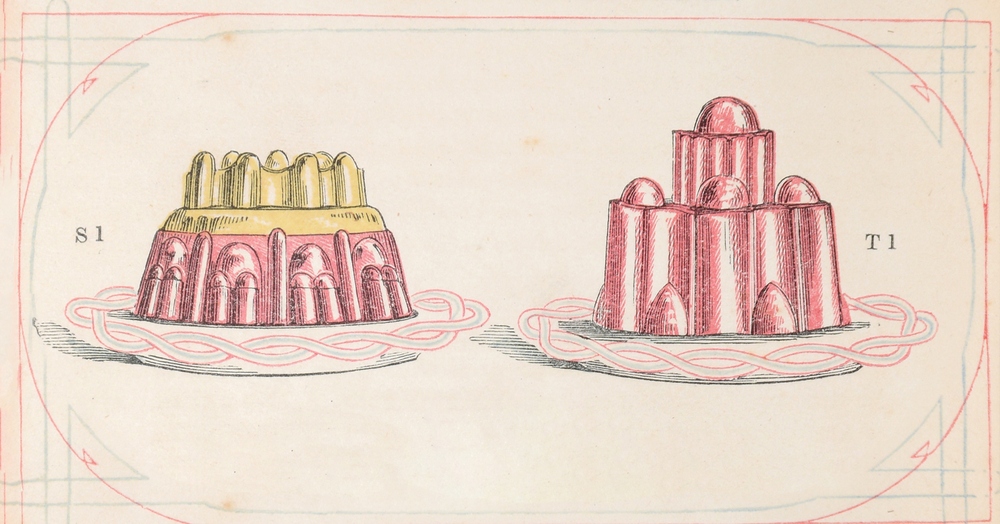We have been fortunate enough to handle some exceptional rare cookery books and manuscripts over the years – the kind that tend to fly off the shelves as soon as we acquire them. These items are often important for the window they provide on the domestic and gastronomic lives of their compilers and users. A remarkable late 17th–19th-century handwritten cookbook, for examples, was first compiled by Rebecah Child, Marchioness of Worcester and was subsequently passed down to and added to by her daughter and granddaughter. This book represented over a century of medicinal, culinary, and household recipes. It was unusual in being so detailed in its attribution of recipes to specific people, whether they were family members with particularly effective cures for goat, fellow aristocrats, or local women.
Another highlight has been a beautiful first edition of Marie-Antoine Carême’s Le Patissier Royal Parisien (1815), one of the most important culinary works of the 19th century, signed by the “chef of chefs” himself. Carême was arguably the first celebrity chef in Europe and the leading figure of fine French dining of his time. His recipes were characterized by their comprehensive ingredients lists and in-depth instructions, both of which were still quite novel at the time of publication. Another “chef of chefs”, Auguste Escoffier famously modernised and systematised the teachings of his predecessor Carême.


Marie-Antoine Carême’s Le Patissier Royal Parisien (1815)
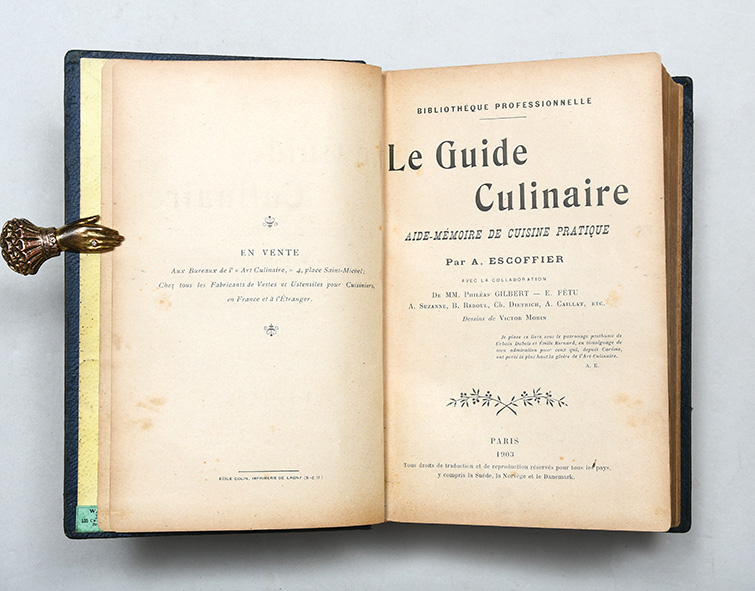
Auguste Escoffier’s Le guide culinaire (1903)
Eccentrics and Rare Culinary Books
The culinary world can be home to some eccentric personalities, and we have certainly come across some very eclectic and unusual items. We have in the past stocked a first edition of Abraham Edlin’s 1805 Treatise on the Art of Bread-Making, in which the author passionately describes the practice of bread-making as “a beautiful and interesting branch of experimental philosophy”. Synergetic Stew – Explorations in Dymaxion Dining was compiled by the staff at the Buckminster Fuller Institute. It features slightly more unusual recipes than your average cookery book: “Omni-dimentional, inter-accomadative/comprehensively rememberable cheese tetrascrolls” (filo pastry cheese parcels) or walnut and coffee muffins sprinkled with “tiny tetrahedra” (chocolate chips), to name just two.
Then there are some wonderfully evocative rare cookery books such as the Alchemist’s Cookbook by Ahmed Yacoubi, a Moroccan artist and storyteller who became a protégé of Francis Bacon and Paul Bowles. The first edition includes 125 recipes “based on the ancient science of Moroccan cuisine”, such as “soup to cure jealousy” and “rainy day greens”.
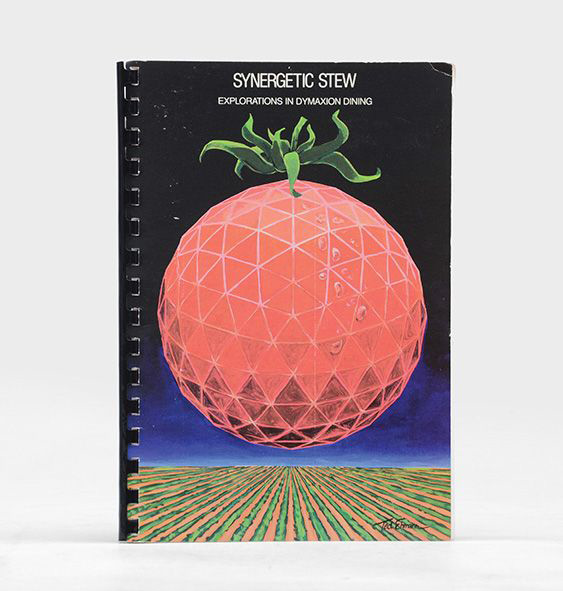

Synergetic Stew (1982) and Ahmed Yacoubi’s Alchemist’s Cookbook (1972)
How Have Rare Cookery Books Changed Over Time?
First editions of rare cookery books like Hilda Leyel’s Picnics for Motorists are also charming and entirely of their time, as evident in the epigraph which reads: “This little book was inspired by a picnic near Itchenor, given in the summer of 1935 by the owner of a white Peke to the owner of a white Alsation”.
Cooking instructions circulated long before the concept of a printed “recipe” existed, and the earliest manuals had none of the helpful explanations, indexing, or detailed measurements that we are used to in modern cookbooks. Some of the most in-demand authors are those that made radical modifications to their cookbooks and their kitchens to make the craft more accessible – François Massialot, the first to alphabetize recipes in print; or François Menon, the first to use the term chef de cuisine to describe his position as head of the kitchen. The authors of a new form of food writing – gourmet guides and restaurant reviews – became popular in line with the rise of the modern restaurant and the celebrity chef persona. First editions of rare cookery works by the two “founding fathers” of this new genre are especially collectable: Grimod de la Reynière’s Almanach des gourmands (1803–12) and Brillat-Savarin’s Physiologie du gout (1826) are high spots.
The Art of Cookery, Made Plain and Easy (1747) by Hannah Glasse and its successor, The Book of Household Management (1861) by Isabella Beeton, are obvious choices for the early “key works” category: both are undisputed “bibles” of cookery, each the most popular example of its century, and reprinted many times over.

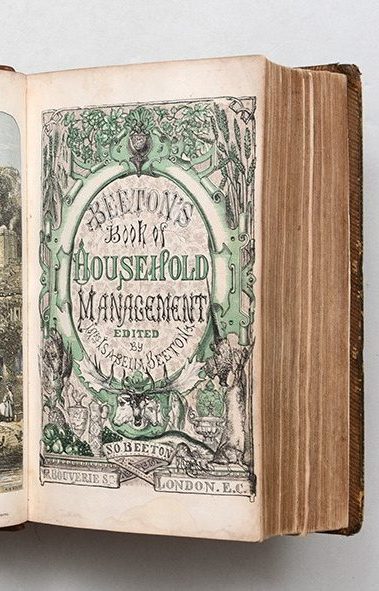
Hannah Glasse’s The Art of Cookery, Made Plain and Easy (1747) and Isabella Beeton’s The Book of Household Management (1861)
Collectors of rare cookery books often gravitate towards authors who were instrumental in reinventing the genre or specific titles that enjoyed immense popularity on publication.
Anthony Bourdain, Julia Child, Elizabeth David, Buwei Yang Chao are just a few names that spring to mind in this category. As for how their works become “cornerstones” of gastronomic literature – besides the sheer importance they hold in the history of food, people often collect what they know and love. In many cases, we remember watching their cookery shows, reading their columns, and trying (with varying degrees of success) to follow their recipes. These kinds of connections can make owning a rare cookbook special.

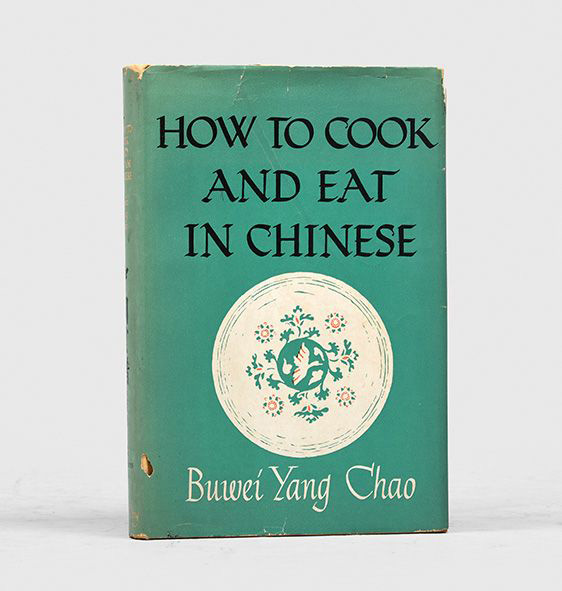
Anthony Bourdain’s Kitchen Confidential (2000) and Buwei Yang Chao’s How to Cook and Eat in Chinese (1945)
What are the Most Valuable Rare Cookery Books
Early printed or original manuscript cookbooks can easily command four- and five-figure prices – the aforementioned Child, Carême, and Glasse are examples of this. Texts recognized as significant historical milestones, like the first cookbook by an African American author (Robert Roberts’s 1827 House Servant’s Directory), are also up there. It’s an accessible genre, though, with plenty of fine first editions and signed copies of modern classics at lower price points.
Prices have changed to reflect the ways in which popular interest in gastronomy has grown and diversified. The most traditionally sought-after titles continue to sell well, especially when found in well-preserved contemporary bindings. We have also observed manuscript material attracting greater attention, because both private and institutional collectors recognize its significance as an important cultural and historical resource. Our collective increasing interest in and focus on non-Western food cultures, plant-based cuisine, and national and regional foodways has led to higher prices for more specialist works. New names are coming to the fore, and new “firsts” are being rediscovered.
The impetus behind seeking out rare books often lies in the connection they give us with the past. In the area of cookery, coming across a cookbook that we sometimes describe as a “kitchen copy” – an example which bears signs of being used while cooking, or with annotations and other evidence of contemporary ownership – is particularly special. This tangible link that can often be found with the people who held, owned, and used a book in times gone by makes collecting cookery a rewarding and popular pursuit.

